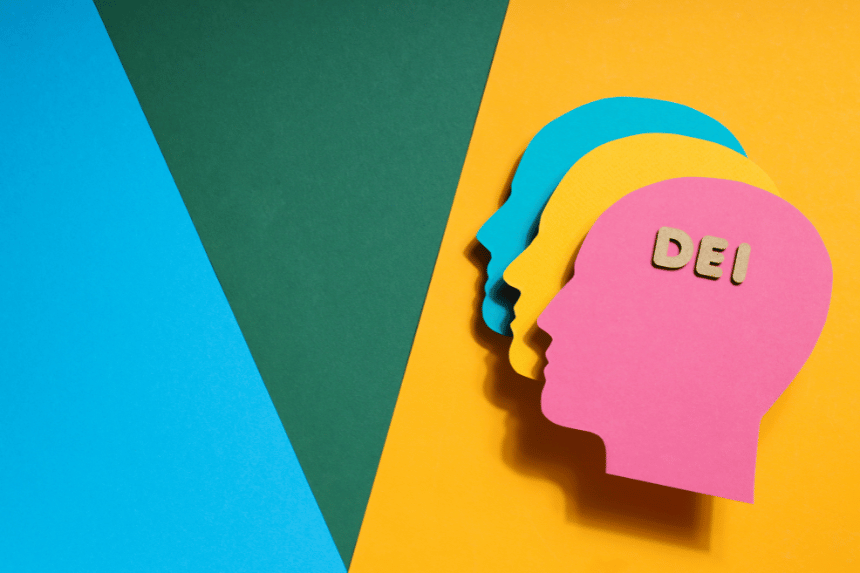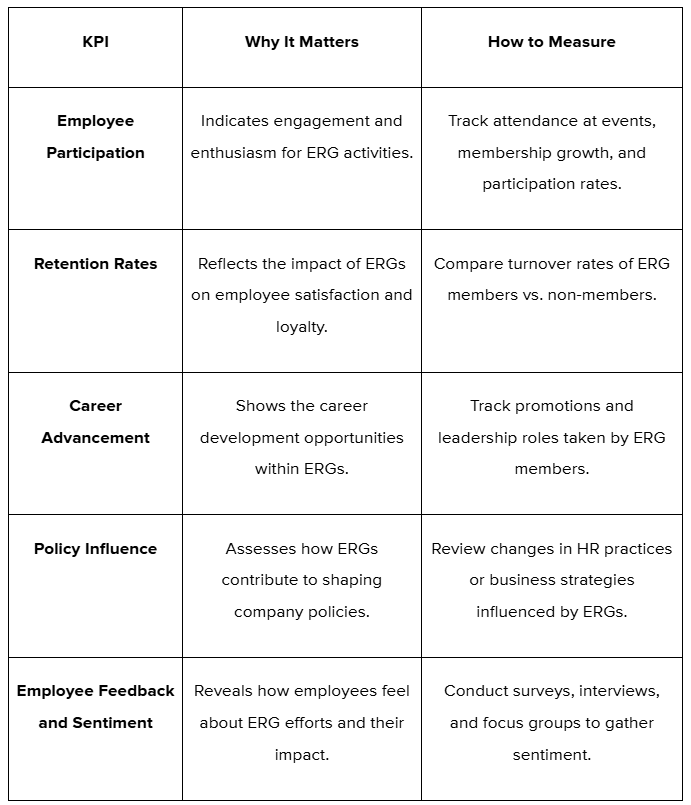
Is your company’s commitment to diversity truly driving success or merely checking a box? Recent studies have shown that inclusive teams are 35% more productive, highlighting the tangible benefits of fostering an inclusive environment. Yet, many businesses still struggle to transform diversity into tangible results.
It is not enough to simply hire diverse talent; creating a truly inclusive environment requires intentional, ongoing efforts. Employee Resource Groups are key to this.
These employee-led groups go beyond the traditional diversity initiatives, providing a platform for underrepresented voices and helping to drive cultural change within the organization. ERGs offer employees a space where they can feel heard, supported, and empowered to make an impact.
In this article, we’ll explore how you can leverage ERGs to enhance your DEI strategy and create a truly diverse workplace. Keep reading to know how to make DEI a driving force for your business.
The Significance of DEI in the Workplace
Did you know that 76% of employees and job seekers said diversity was important when considering job offers? Building a workplace where everyone feels included isn’t only a noble goal; it’s also a business strategy that leads to higher profits. DEI initiatives are a key driver of organizational success. When implemented effectively, DEI leads to:
1. Improved Financial Performance
Companies prioritizing DEI are more likely to experience better profitability. Diverse leadership teams bring unique perspectives, which can drive growth and enhance business strategies.
2. Enhanced Employee Satisfaction and Retention
A workplace that values diversity fosters engagement and belonging. Employees who feel respected and valued are more likely to stay with the organization, which helps reduce employee turnover and increases job satisfaction.
3. Innovation and Creativity
A strong DEI culture fuels innovation, strengthens teams, and enhances overall business performance. It’s about understanding the various dimensions of diversity and respecting the different identities, backgrounds, and experiences of your workforce.
Understanding Different Dimensions of Diversity
A truly inclusive workplace actively embraces harmony. Diversity is more than just race, gender, or ethnicity; it encompasses a broad spectrum of identities, experiences, and perspectives.
To foster diversity, we must understand it first:
- Internal Diversity refers to characteristics people are born with, such as race, gender identity, age, sexual orientation, and physical ability. These influence an individual’s lived experiences and shape their perspectives and opinions in the workplace.
- External Diversity, on the other hand, includes traits that develop over time, such as education, socioeconomic background, religion, and personal interests. These factors influence how individuals impact employees with their work and colleagues.
- Organizational Diversity is shaped by an employee’s role within the company, including department, job function, seniority, and tenure. Recognizing this type of diversity helps organizations foster cross-functional collaboration and career growth opportunities.
- Worldview Diversity is a combination of internal, external, and organizational factors that shape an individual’s beliefs, values, and perspectives. This diversity influences communication styles, problem-solving approaches, and decision-making in the workplace.
Understanding these dimensions allows companies to create policies and programs that encourage inclusivity. Beyond this, however, is ensuring that diversity is not just acknowledged but nurtured. This is where ERGs come in.
The Role of ERGs in Promoting DEI
ERGs are a powerful force in advancing Diversity, Equity, and Inclusion (DEI) within organizations. These employee-led groups create a platform for individuals from underrepresented backgrounds to connect, share experiences, and advocate for workplace inclusivity.
At their core, ERGs create a sense of belonging by offering a safe and supportive space for employees to discuss challenges, celebrate identities, and engage in open conversations. When employees feel connected, they are more engaged, leading to higher morale and improved performance.
ERGs serve as catalysts for cultural change within the organization. They help refine policies and practices to be more inclusive. Additionally, they provide leadership with valuable insights into the experiences of marginalized employees. ERGs often:
- Organize workshops, cultural awareness events, and panel discussions on DEI topics.
- Raise awareness and foster empathy among employees across all levels.
- Advocate for inclusive hiring practices and help ensure fair representation.
For employees, ERGs offer leadership and professional development opportunities. Many members take on organizational roles within their groups, learning to lead discussions, manage projects, and influence company culture.
ERGs also directly influence business decisions. Their feedback on hiring practices, marketing campaigns, and product development ensures that companies reflect the diverse needs of both employees and customers.
ERGs help organizations:
- Ensure their products and services are inclusive and representative.
- Advocate for fair representation in marketing and product development.
- Provide valuable insights on creating a more inclusive brand image.
Now, you might wonder how companies can effectively implement and sustain their ERGs to make a lasting difference. Let’s explore the best practices for building strong, impactful employee groups.
Best Practices for Implementing and Enhancing ERGs
To ensure that ERGs thrive and make a meaningful impact, organizations need to follow these essential steps for successful implementation and management:
Step 1: Secure Leadership Support
Strong leadership commitment is key to the success of ERGs. Ensure that senior leaders:
- Actively champion DEI initiatives across the organization.
- Sponsor ERGs to provide visibility and resources.
- Participate in ERG activities and engage with employees.
Step 2: Define Clear Goals
Set specific and measurable goals for each ERG to align with the broader DEI strategy:
- Establish objectives related to employee engagement, leadership development, or organizational impact.
- Ensure goals are achievable and aligned with company values and priorities.
Step 3: Provide Resources and Training for ERG Leaders
ERG leaders are the backbone of these groups. Ensure they have:
- Training in facilitation, conflict resolution, and project management.
- Access to necessary resources to lead effectively and drive change.
Step 4: Foster Cross-Functional Collaboration
Encourage collaboration between ERGs and other departments to broaden their impact:
- Work with HR on recruitment and retention initiatives.
- Partner with marketing to promote inclusive branding.
- Engage with product development to ensure inclusivity and accessibility in company offerings.
Step 5: Track and Measure ERG Success
Regularly assess and measure the effectiveness of ERGs by:
- Gathering employee feedback on ERG activities.
- Tracking engagement metrics and business impact.
- Celebrating achievements and identifying areas for improvement.
ERGs are powerful, but only when they’re properly supported. Several factors determine whether they would improve inclusion in your organization.
How to Measure the Impact of ERGs on DEI Initiatives
An organization’s leadership team is excited about the company’s ERGs. They launched initiatives for women in leadership, racial equity, and LGBTQIA+ inclusion. But how do they gauge if their efforts are working?
To ensure ERGs are more than a feel-good initiative, these initiatives should be tracked using the following KPIs:
With the right data, organizations can prove ERGs are making a difference. Additionally, ensuring the longevity of ERG can take inclusion efforts one step further.
Training and Support for Effective DEI
Training and support are essential for ERGs to sustain and create lasting impact. After all, 69% of executives rate diversity and inclusion as an important issue. Thus, providing ERG leaders and members with the right tools and knowledge will ensure they can lead effectively and effectively improve your workplace’s DEI status.
The following framework can help you make the most out of your organization’s ERGs.
1. DEI Training for ERG Members
ERG members need to understand the broader DEI landscape to ensure their activities align with organizational goals. Comprehensive training can help them:
- Gain a deeper understanding of unconscious bias and how it affects decision-making.
- Learn effective communication strategies for advocating for inclusivity.
- Understand the legal and ethical aspects of DEI within the workplace.
2. Leadership Development for ERG Leaders
ERG leaders play a crucial role in guiding their groups and advocating for change. Providing them with leadership training will help them:
- Develop strong facilitation and conflict-resolution skills.
- Gain expertise in mentorship, helping them develop future DEI leaders.
3. Ongoing Support for ERGs
Support doesn’t end once ERGs are established. Continued engagement from leadership is necessary to sustain the groups and amplify their influence. Companies should:
- Allocate resources for ERG activities, including funding for events and development programs.
- Regularly check in with ERG leaders to offer guidance and feedback.
- Offer networking opportunities with other ERGs and leadership to encourage collaboration.
Conclusion
ERGs are more than just an organizational tool; they are a powerful driver of Diversity, Equity, and Inclusion (DEI). They influence business decisions, create a more inclusive culture, and ultimately drive company success. For ERGs to thrive, it’s essential to implement best practices, offer continuous training and support, and track their impact on the organization.
At EI, we understand the critical role that DEI initiatives play in an organization’s success. That’s why we offer specialized DEI training solutions to help you build and sustain inclusive workplaces. Our training programs equip your leaders and employees with the skills and knowledge they need to foster a truly inclusive culture, ensuring that your DEI efforts are impactful and sustainable.
Ready to take the next step in building a more inclusive and diverse workplace? Contact us today to explore how our DEI training solutions can help transform your organization and empower your employees. Click here to get in touch with us and start your journey toward creating a truly inclusive workplace.




